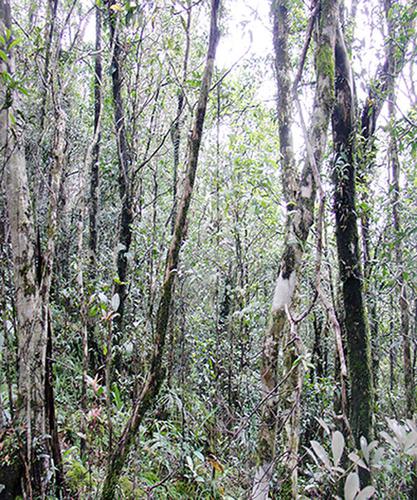当前位置:
X-MOL 学术
›
Journal of Vegetation Science
›
论文详情
Our official English website, www.x-mol.net, welcomes your feedback! (Note: you will need to create a separate account there.)
Scaling relationships among functional traits are similar across individuals, species, and communities
Journal of Vegetation Science ( IF 2.8 ) Pub Date : 2020-05-22 , DOI: 10.1111/jvs.12893 Wenxing Long 1, 2 , Yadong Zhou 3 , Brandon S. Schamp 4 , Runguo Zang 5, 6 , Xiaobo Yang 7 , Lourens Poorter 8 , Chuchu Xiao 1, 2 , Menghui Xiong 9
Journal of Vegetation Science ( IF 2.8 ) Pub Date : 2020-05-22 , DOI: 10.1111/jvs.12893 Wenxing Long 1, 2 , Yadong Zhou 3 , Brandon S. Schamp 4 , Runguo Zang 5, 6 , Xiaobo Yang 7 , Lourens Poorter 8 , Chuchu Xiao 1, 2 , Menghui Xiong 9
Affiliation

|
Question: Bivariate relationships among functional traits reflect how plants adjust to environments through the allocation of limiting resources. Bivariate relationships are well studied across species, but whether the nature of these trait relationships changes across organizational levels (individual, species, community), and whether processes driving these relationships vary across these levels, is seldom explored. Location: The tropical cloud forests of the Bawangling Nature Reserve, Jianfengling Nature Reserve and Limushan Nature Reserve on Hainan Island, Southern China. Methods: We measured leaf mass per area (LMA), plant height (H) and wood density (WD) for 4,748 individual trees, 174 species and 48 communities in three tropical cloud forests, and recorded five soil characteristics that are important for plant growth. We evaluated bivariate relationships between these traits across the three organizational levels, and assessed the effects of soil conditions on these trait relationships. Results: LMA versus H, WD versus H, and LMA versus WD were all positively and disproportionately related, suggesting differential carbon investment between leaves and stem, as well as between stem height and stem density. The slopes of these relationships did not differ significantly across the three levels, suggesting a similar allocation strategy operating at different hierarchical levels. Soil phosphorus had a significant effect on the scaling exponents across all three organizational levels, indicating that phosphorus limitation in cloud forests is a principal driver of resource allocation patterns in trees. conclusions: We conclude that tropical cloud forest trees have relatively consistent scaling relationships between three primary functional traits across the individual, species, and community levels. The coordinated resource allocation strategies in plants are most likely driven by the prevailing environmental constraints.
更新日期:2020-05-22



























 京公网安备 11010802027423号
京公网安备 11010802027423号